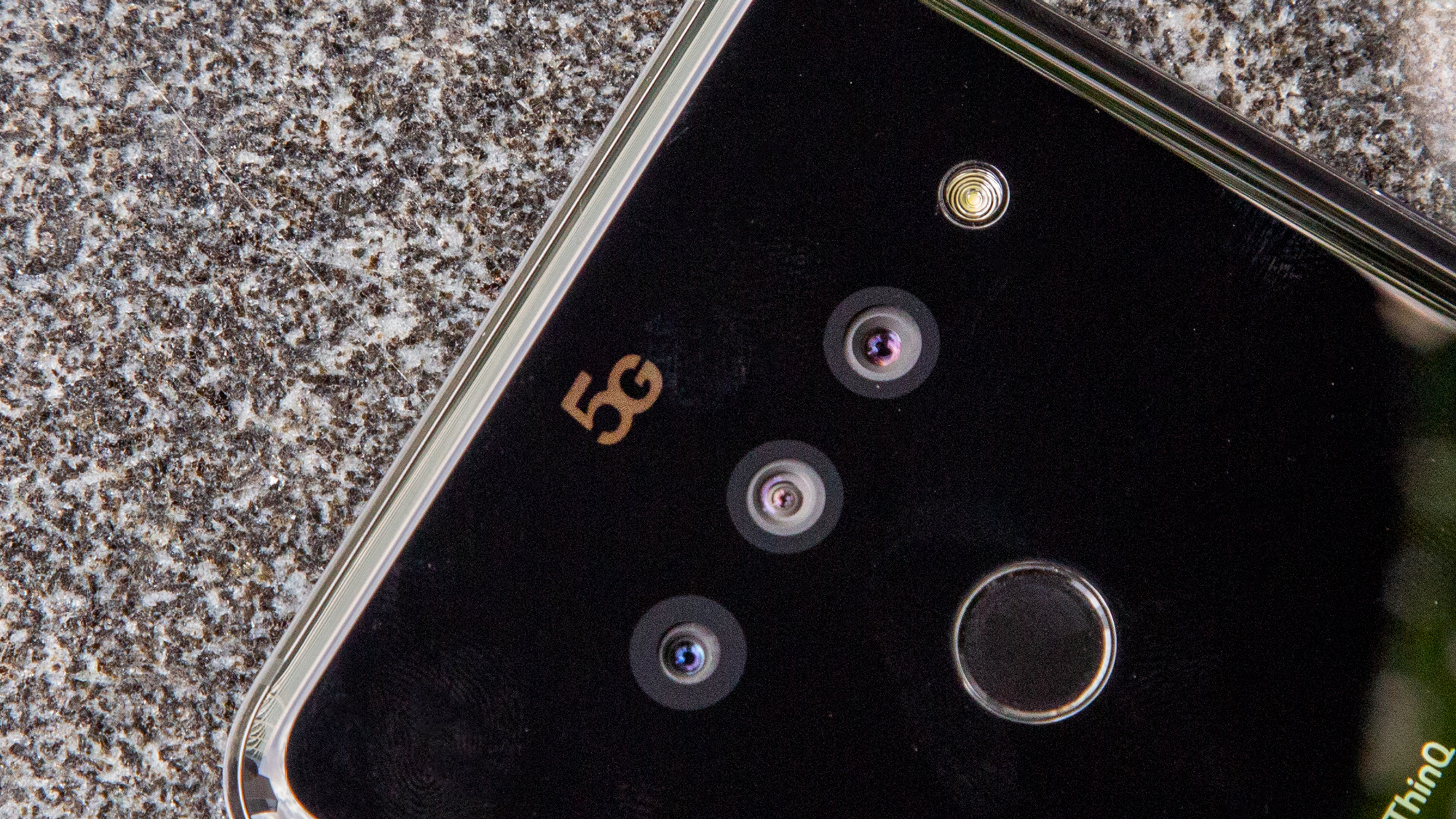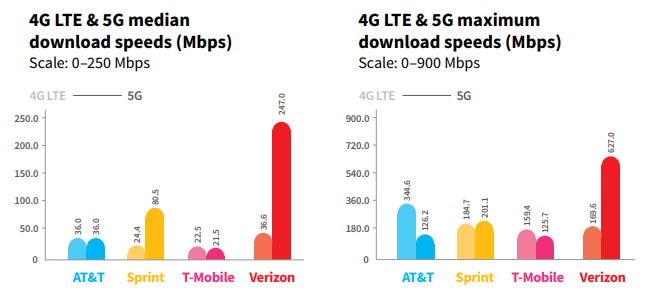Want real 5G speeds? Get on Sprint or Verizon, report says
RootMetrics says that half the 5G out there is slower than 4G LTE

5G was supposed to revolutionize the way we work, play and connect with each other, especially while on the go. And it could very well still happen — but certainly not today, judging by the latest data from mobile network analysts RootMetrics.
The good news is that 5G is indeed beginning to take shape around the U.S., and some of the networks coming online are delivering real, quantifiable improvements in speed and overall performance compared to the 4G LTE networks of old. The bad news is that not all are, and the carriers that are underperforming aren't just failing to meet their speed targets — they're falling behind 4G on the regular.
- What is 5G? the definitive guide to the 5G network rollout
- 5G phones: Every known phone and release date
- New iPhone 12: Everything we know about Apple's first 5G iPhones
The problem is low-band 5G — the kind of infrastructure AT&T and T-Mobile have chosen to build out their main 5G deployment. While low-band 5G reaches as far as the cellular data we're all used to today, there's a very good, very underwhelming reason for that: it's not especially different from LTE. As a result, the speeds it delivers aren't very different, either. Sometimes, they're actually worse.
Take, for example, AT&T's performance in the Indianapolis round of RootMetrics' latest 5G evaluation, released today (March 11). There, AT&T recorded epic 4G LTE speeds, hitting a peak of 386 Mbps across all the tests RootMetrics performed in the city. That's surely impressive for 4G, which, you'd think, would translate into an even more exciting showing on 5G.
Alas, that's not how RootMetrics' trials panned out. AT&T's 5G network never surpassed 175 Mbps for downloads. And it wasn't the only network to see its 5G infrastructure underdeliver: T-Mobile suffered a similar fate in the same city, recording 83 Mbps in its fastest 4G trial, and 85 Mbps in its best 5G attempt.
In other words, the Uncarrier's much-vaunted nationwide 5G network was only good for a paltry extra 2 Mbps. And, of the five cities in which RootMetrics conducted its testing, Indianapolis was the only one where T-Mobile's 5G beat out its 4G in terms of maximum speed. Even when taking account of average performance, T-Mobile and AT&T's 5G throughput lagged behind 4G more often than not across all cities.
- More: The best fast VPN may actually speed up your connection

We've seen it ourselves. Tom's Guide's Mark Spoonauer clocked middling speeds on T-Mobile's 5G network in Manhattan on the brand-new Samsung Galaxy S20 Ultra just last week. Between Bryant Park and Times Square in midtown, the $1,400 phone vacillated from a disappointing 32 Mbps to a downright embarrassing 7 Mbps.
Get instant access to breaking news, the hottest reviews, great deals and helpful tips.
Mid-band and mmWave 5G are faster
Thankfully, low-band isn't the only flavor of 5G. There are also mid-band (which still falls into the same bucket of "sub-6Ghz 5G" along with the low-band stuff) and millimeter-wave (mmWave) networks, which sacrifice coverage for faster speeds. And these are the kinds of 5G networks where RootMetrics cited real change.
On the mid-band side, it's all about Sprint, whose median 5G download speeds consistently blew away its 4G performance across all five cities in RootMetrics' test. The biggest win for the Now Network came in Chicago, where Sprint averaged only 34 Mbps on 4G, but 136 Mbps on 5G, with a peak 5G speed of 249 Mbps.
The catch with mid-band networks is that while they do have enough range to evenly cover cities and penetrate buildings and physical obstructions, the signal isn't quite as strong indoors as it is with low-band networks. That means you're less likely to be able to take advantage of Sprint's mid-band service inside, though it's certainly not impossible.

And then there's mmWave, which Verizon is leading with to enter the 5G arena. These networks are exponentially faster than anything in the sub-6Ghz realm, at the cost of extreme spatial sensitivity. Just how extreme? Well, for starters, you have to be within line-of-sight of the antenna, which is typically outdoors. You also can't be too far away, or else you'll lose the signal entirely. For these reasons, mmWave is better suited for dense cities — where many 5G nodes can be sprinkled on the tops of buildings — rather than sparse rural expanses.
Given mmWave's massive speed advantage, Verizon unsurprisingly crushed its rivals in RootMetrics' download figures, reaching 780 Mbps and 845 Mbps in individual trials in Chicago and Washington, D.C., respectively — at least 500 Mbps faster than any of the other Big Four networks in any test.
And even then, 845 Mbps is a conservative estimate for the kind of performance Verizon's mmWave can achieve. Last May, I recorded a peak speed of 1.07 Gbps in the Windy City using a Verizon-connected Samsung Galaxy S10 5G, and Verizon tells me network improvements in the past year have made its service even quicker since then. In Los Angeles in December, we witnessed an astonishing 1.66 Gbps.
What does it all mean?
Your primary takeaway from RootMetrics' study should be that all 5G networks are not equal. There's always a coverage-versus-speed tradeoff, and right now, the carriers who have chosen low-band networks for maximum range, like AT&T and T-Mobile, are not posting results that are appreciably better than the service you've been using for the past decade.
Mid-band and especially mmWave is where we begin to see carriers delivering the speeds they promised 5G would — the sort of performance that allows you to download a season of a TV show to your device in a minute or less. Of course, these kinds of networks aren't perfect either, due to their coverage limitations, though they complement conventional 4G LTE and low-band 5G networks well.
It must also be said that we're still very much in the early days of every carrier's 5G deployment. Verizon will introduce a sub-6GHz service of its own before the end of the year, and AT&T has just opened its mmWave-based 5G Plus network in select markets as of this month. As such, carriers will continue to fill the gaps where their networks are weakest, and even those underwhelming low-band 5G speeds will eventually climb and regularly surpass what you can get today on 4G LTE — it's just going to take some time.
Adam Ismail is a staff writer at Jalopnik and previously worked on Tom's Guide covering smartphones, car tech and gaming. His love for all things mobile began with the original Motorola Droid; since then he’s owned a variety of Android and iOS-powered handsets, refusing to stay loyal to one platform. His work has also appeared on Digital Trends and GTPlanet. When he’s not fiddling with the latest devices, he’s at an indie pop show, recording a podcast or playing Sega Dreamcast.
